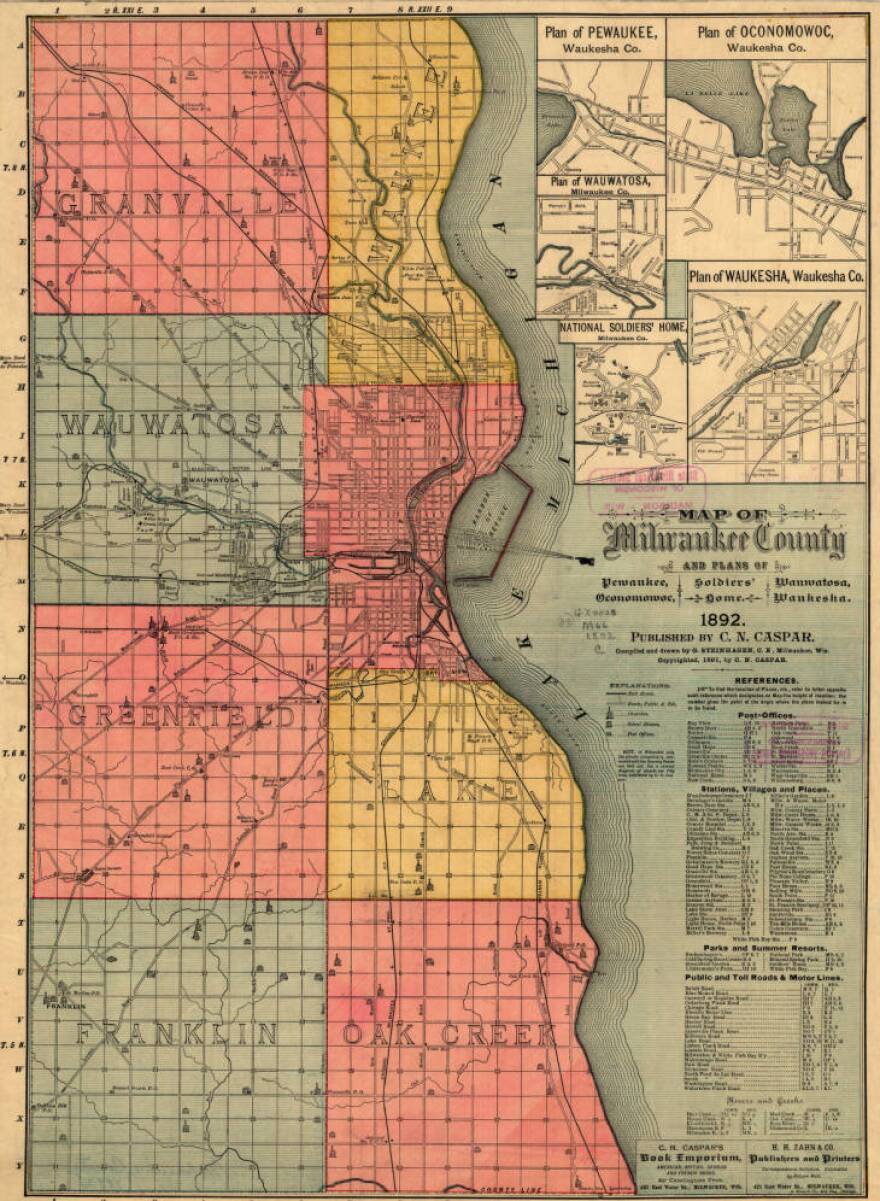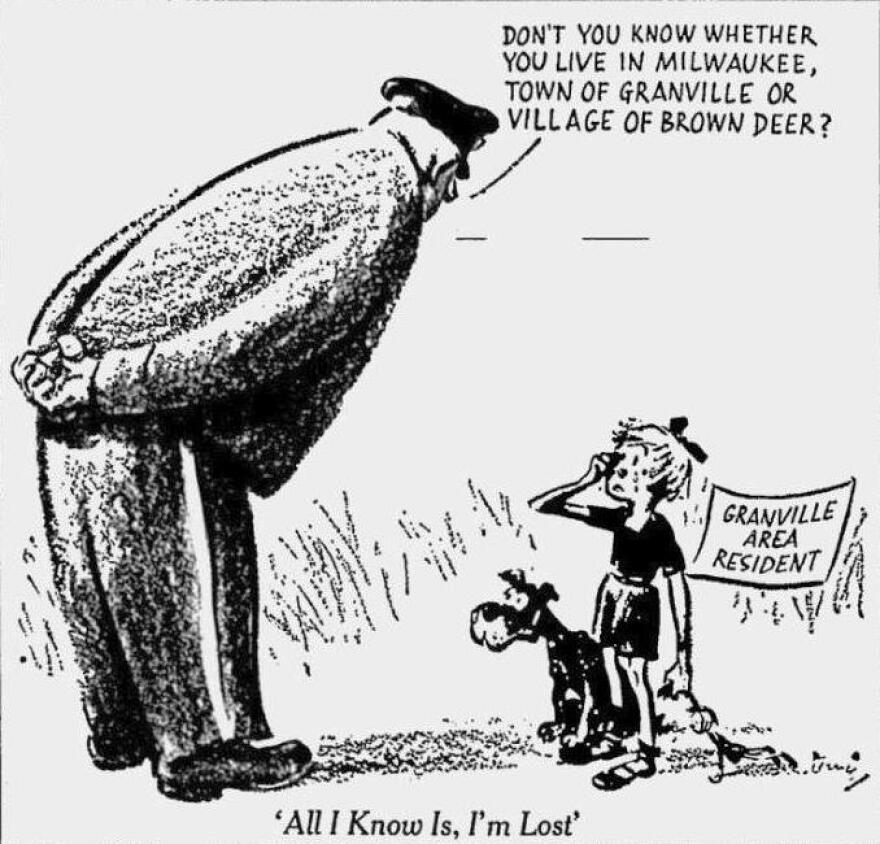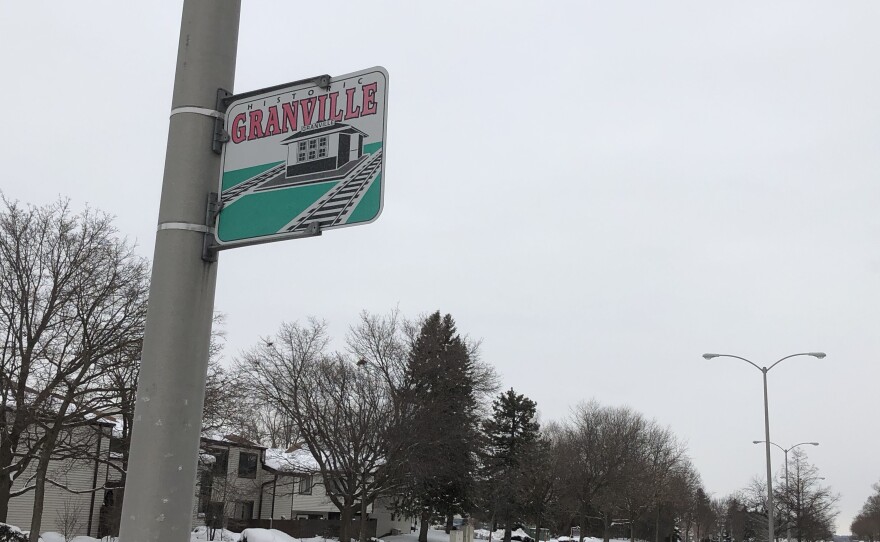In the 19th century, Wisconsin’s Territorial Legislature divided Milwaukee County into seven townships. Five of them eventually became municipalities: Milwaukee, Wauwatosa, Greenfield, Franklin, and Oak Creek.
But two of those original townships were absorbed by the city of Milwaukee and live on now only as neighborhood names: Lake and Granville. Last year Bubbler Talk explored the history of Lake. Now, we’ll travel to the northwest corner of Milwaukee County for Chapter 2: Granville.

Terry Warner sent us the question that prompted this story. He grew up in Elm Grove, and remembers as a child in the 1950s and '60s, making the drive east to his grandmother in Bayside.
“I just looked out the window — we didn’t have any entertainment,” Warner recalls. “The way you survived a road trip was you looked out the window and looked at things.”
He remembers driving through the village of Granville on a regular basis.
“Once you were north of Appleton Ave., you were in the country, you were really in the country,” Warner says. “And it was all working dairy farms until you got to that little Granville Station.”

In his visits back over the years, Terry has wondered why Granville never became its own suburb. To answer that question, WUWM turned to local history buff Ron Winkler.
“Granville was the township that was in the extreme northwest corner of Milwaukee County,” Winkler explains.
Its borders were Ozaukee County to the north; the town of Wauwatosa to the south; Range Line Road or 27th Street to the east; and Waukesha County to the west.
Winkler says Granville was a farming mecca into the mid-1900s, and that played into why it didn’t become its own city.
“The main reason that did not occur is because Granville was highly agricultural,” Winkler says. “And as a result of that, Granville never attained the population that was necessary in order to incorporate.”
Winkler says following World War II, Milwaukee and surrounding communities were in a race to expand their borders and snatch up remaining town land.
“Milwaukee became more aggressive with its annexation program. People all over the county, in the town lands started to get worried because they were wondering what they could do. And that’s why we ended up with a lot of new suburbs in the time period.”

Milwaukee’s land acquisition campaign sparked a number of “annexation wars” — including a battle between Milwaukee and Brown Deer over Granville. Brown Deer was a former section of Granville that incorporated, and then sought to absorb the rest of the township. Milwaukee challenged the move.
The incorporation battle lasted six years and went to the Wisconsin Supreme Court. In 1962, Milwaukee won — over what Winkler says were some minor errors on Brown Deer’s petition to incorporate.
“Milwaukee added 16.5 square miles in the northwest corner of Milwaukee County to the city,” Winkler says. “And that actually was the largest annexation that the city of Milwaukee ever had at one time.”
Winkler says Granville today retains some of its agricultural character. It’s one of the most rural areas of the city, dotted with parks, including Havenwoods State Forest.
“It still is one of my favorite places to go biking because I do feel like I’m out in the country,” Winkler says. “When I ride out on Granville Road, it feels like being in the county.”

Chantia Lewis represents the 9th District, which encompasses much of the former Granville township, on the Milwaukee Common Council. She says residents treasure the rural character of the northwest side.
“They want to have that rural feel,” Lewis says. “They want to continue to be a rural town in an urban city. It’s an amenity to everyone.”
Lewis is pushing for the revitalization of northwest Milwaukee. The vacant Northridge Mall is one example of the economic decline the area has experienced.

But Lewis says new businesses are settling in Granville, and vacancy rates are dropping.
“We’re affectionately calling it ‘The New 9th,’” Lewis says. "So it’s the rebranding, it’s the hope, and it’s the way we’re envisioning what a new northwest side of town could look like.”
Lewis says, Granville’s agricultural history, and the “annexation war” over it, should be a source of pride as residents look to the future of the northwest side.
Editor's note: This story was updated with the correct boundaries of Granville Township.
Have a question you'd like WUWM to answer? Submit your query below.
_










